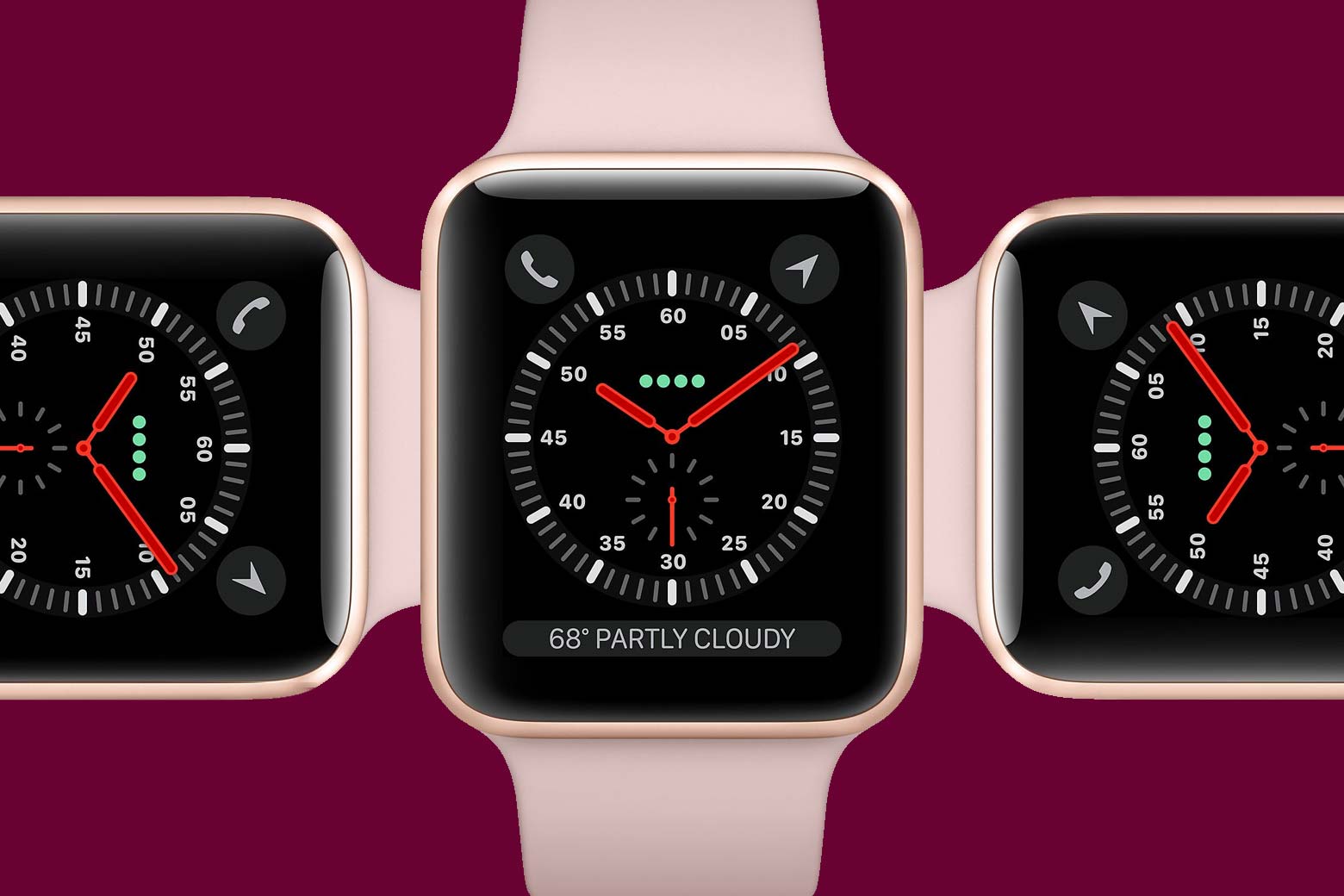The Apple Watch’s hardware hasn’t changed much since its debut in 2015. Its latest iteration, the Series 3, is slightly thicker than its predecessor and water resistant, but its screen size, rounded rectangular shape, and buttons on its side have remained consistent through the years. That could change in the near future. Fast Company reports that Apple is planning to update the Apple Watch in a way that brings it more in line with other products like the iPhone and MacBook: by taking away its mechanical buttons. To be clear, the idea of its two buttons—the digital crown and side button—will remain; they may even look or feel quite similar to how they do now. But instead of pressing downward like a traditional button, they’ll respond based on your touch. It sounds like a minor change, but it could have a big impact on how your Apple Watch operates.
In 2015, Apple re-engineered how its MacBook trackpads worked. Instead of physically depressing, this Force Touch trackpad used haptic vibrations to mimic the sensation of a click without requiring any moving parts. Apple extended this idea with the iPhone 7 in 2016, replacing the home button with a solid-state alternative. (“Solid-state” is a term used to describe electronic components with no moving parts.) Now, Apple would reportedly be doing the same with its Apple Watch buttons. Fast Company reports that while button presses will be gone, the digital crown, which can be rotated clockwise or counterclockwise to scroll through menus or zoom in on areas of the home screen, will remain as a navigational option on the device—you just wouldn’t be able to click it downward anymore.
The move to solid-state buttons has some obvious benefits: It further waterproofs the watch; it eliminates a hardware mechanism that could eventually break or get stuck; and it better prevents against accidental button presses, an issue that could have serious consequences depending on your iOS settings. Earlier this year, this became a notable issue after Apple introduced its SOS safety alert for automatically dialing local authorities. Holding down the digital crown for roughly three seconds triggers the dial, but many Apple Watch and iOS users were triggering the alert accidentally while sleeping, putting their watch back on after charging, or over the course of daily wear.
The removal of a hardware-based button has some other benefits as well. In eliminating the button-pressing hardware inside the Apple Watch’s body, it potentially opens up more space within the device. This could be used for other hardware components, such as a larger battery.
It also allows for new types of health applications. While Apple can detect some heart stats, such as heart rate, with one single point of contact on the underside of the watch, other heart and health measures require two points of contact. With a touch sensor on the side of the watch instead of a button, it would have that second point of contact built in. This possibility falls directly in line with a December report that Apple was working on an electrocardiogram, or EKG, monitor for the Apple Watch. An EKG is a test of the heart’s electrical activity, but to work with the Apple Watch alone, users would need to press the device with the opposite hand. Once contact was made between both hands, the device could send an electrical signal across your body and measure your heart signals, potentially alerting wearers to abnormalities such as irregular heart rhythms (arrhythmia). Currently, there are a variety of third-party bands that make this functionality possible, but with a touch sensor in place of a standard button, the Apple Watch could accomplish this on its own.
Apple is not alone in its quest to eliminate hardware buttons, which are susceptible to breakage and problematic for waterproofing efforts no matter the device. Samsung did the same with its flagship Galaxy smartphone line in 2017. And the iPhone X, in abandoning the idea of the home button altogether, followed the precedent of a number of other Android phones. Apple’s move to solid state on its laptops and now, potentially, the Apple Watch isn’t a move competitors seem to have followed just yet. However, introducing this on the Apple Watch could be a first step to the company doing the same with the iPhone and iPad’s power button and volume buttons, too.
For devices that are almost always powered on and can be navigated through expanded swiping gestures and voice-based communications, the need for hardware buttons on mobile devices is shrinking. By replacing a traditional button with a touch-sensitive pseudo button, you can achieve the same functionality as you’d get before and more. The switch shores up the device against water or particle debris and opens up the possibility of new types of interactions or health-related functions. And in truth, the Apple Watch’s buttons always felt like a throwback to traditional watches and were a little awkward to press. Without eliminating any features, a change to solid-state buttons could vastly improve the Apple Watch experience for most users and bring it in line with broader trends across its suite of devices.
